buyaukdrivinglicence0850
About buyaukdrivinglicence0850
Guide To 0nline Driving Licence: The Intermediate Guide To 0nline Driving Licence
The Digital Revolution: Navigating Online Driving Licenses
In today’s digital age, numerous aspects of life have transitioned online, varying from going shopping to banking, and now, even the procedure of obtaining a driving license. The arrival of online driving licenses has actually transformed how individuals obtain and manage their driving opportunities, making the process more efficient and easy to use. This article aims to check out the benefits, procedures, and possible difficulties associated with acquiring an online driving license.
Comprehending Online Driving Licenses
An online driving license is a digital equivalent of the conventional physical driving license. It offers the very same legal credibility, allowing individuals to drive lawfully, but it is saved and accessed through digital means. Many jurisdictions have welcomed digital options, therefore simplifying the frequently troublesome procedure of getting a driving license.
Advantages of Online Driving Licenses
The integration of technology into the licensing process provides numerous advantages:
-
Convenience: Individuals can request and renew their driving licenses from the convenience of their homes, eliminating the requirement for in-person check outs to government offices. This is particularly helpful for those residing in remote locations or with hectic schedules.
-
Time-Saving: Traditional processes frequently involve long queues and several check outs to workplaces. By going digital, candidates can conserve considerable quantities of time.
-
Ease of access: Online applications can be accessed 24/7, allowing users to proceed at their own pace. Information and status updates are also readily available.
-
Cost-Effectiveness: Online procedures can lower administrative expenses. Many federal governments provide lower charges for online transactions versus traditional applications due to decreased overhead.

-
Ecological Impact: The shift to digital minimizes the need for paper-based applications, contributing to more sustainable practices and lowering the carbon footprint related to conventional administrative procedures.
Actions to Obtain an Online Driving License
While the particular treatments can differ by nation or state, the procedure of obtaining an online driving license normally follows these steps:
-
Visit the Official Government Website: Identify the particular department or ministry responsible for motor vehicle policy and navigate to their online licensing website.
-
Develop an Account: Most jurisdictions require candidates to produce an account, which may involve offering individual details like name, address, and date of birth.
-
Submit Required Documentation: Users are generally needed to submit specific documents, including proof of identity, proof of home, and, in many cases, previous driving records.
-
Total the Application Form: Fill out an application form that normally consists of questions about driving history and health.

-
Pass Required Tests: Depending on the license class, you might require to pass an online composed test, theory test, and even submit to an eye examination.
-
Pay the Fees: Online payment alternatives are typically available, allowing users to spend for their application via credit card, debit card, or other electronic payment approaches.
-
Receive and Print Your License: After processing, users normally get a verification via email, followed by their digital license, which they can print if required.
Common Challenges
Regardless of its numerous advantages, the shift to an online platform is not without its difficulties:
-
Digital Divide: Not everyone has equivalent access to the web or technology. This can develop variations in who can successfully take advantage of online licensing services.
-
Security Concerns: The storage of individual information online raises problems regarding information privacy and cybersecurity threats. Federal government agencies should ensure robust security measures are in place to secure delicate data.
-
Technical Difficulties: Users might face challenges utilizing digital platforms due to lack of familiarity with technology or encountering system breakdowns.
-
Confirmation Issues: Ensuring that uploaded documents are genuine and valid can position problems in online circumstances. This could lead to delays in processing applications.
Regularly Asked Questions (FAQs)
1. Is an online driving license valid everywhere?Yes, an online driving license is thought about legitimate as long as it is issued by the appropriate authority in your jurisdiction. However, it’s crucial to examine if third-party entities accept digital licenses in particular contexts, such as airports or bars. 2. Can I replace my physical driving license with an online one?Most jurisdictions permit individuals to obtain a digital format of their license after they
have actually effectively finished the online application process. Nevertheless, you might still be required to carry a physical copy in certain circumstances. 3. What if I experience technical issues throughout my application?Most licensing departments supply assistance by means of phone or online chat services.
If you deal with any issues, it’s a good idea to reach out instantly for support. 4.
Are there age limitations for applying online?Most jurisdictions require applicants to be a minimum of 16 years old, however inspecting local guidelines is vital, as some areas
may impose different age restrictions for online applications. 5. What if I lose my online license?In the event of a lost online license, candidates can typically log back into their account to reprint their digital license or request a replacement if needed.
The digital improvement of the 0nline driving licence (https://www.colinfossa.top/automotive/unlocking-the-fast-lane-your-guide-to-buying-a-uk-drivers-license) license
procedure provides a peek into the future of governance and public services. While the shift to online driving licenses is not without challenges, the convenience and performance
that accompany it are driving forces that can not be neglected. As this trend continues, it is important for federal governments to address concerns connected to ease of access, security, and technical troubles to guarantee that digital licenses serve everyone relatively and equitably. With a thoughtful technique, online driving licenses can represent not just a change in format however a basic enhancement in how people communicate with governmental services.
No listing found.
